You need a lot of extra time to deal with security checks at the airports in Israel and Egypt, so today, Ted and I had to wake up at 4:00 a.m. (yawn) for our private charter flight from Cairo to Luxor. I’ve never been on a charter or a private flight before, and our flights from Jerusalem to Cairo and from Cairo to Luxor qualified for both. We’ll have another private chartered flight from Luxor back to Cairo at the end of our Nile River cruise.
A private chartered flight sounds awesome but, in reality, it was a well-used ordinary passenger plane from a commercial charter company—there were no lounge chairs, no gold fixtures in the bathrooms, no fully-reclining seats, nor any other luxury amenities. The private part of the flight was that it was a small jet and, including Viking personnel and 80 cruisers-to-be, we filled the plane. The good part was that, even though the flight took less than two hours, we were served a full, hot meal for lunch. It seemed like a treat at the time, but I suspect the meal was included as a time-saver because, when we arrived, we put our luggage on one bus and rode in a different one. Our luggage went to the ship for our Nile River cruise; we passengers embarked on a four-hour tour of the Karnak Temple—one of the Egyptian sites our guide, Hanan, helped to excavate.
As we drove from the airport to the temple, we crossed the Avenue of the Sphinxes which was buried under sand for centuries. This avenue includes 1,050 sphinxes in the 2.25 miles it traverses between the Karnak Temple and the Luxor Temple. Sphinxes originated in Egypt and had three distinct types: The Androsphinx had a lion’s body with a person’s head; the Criosphinx had a lion’s body with a ram’s head; and the Hieracosphinx had a lion’s body with a falcon’s or a hawk’s head. Here’s a photo of one part of the Avenue of the Sphinxes.
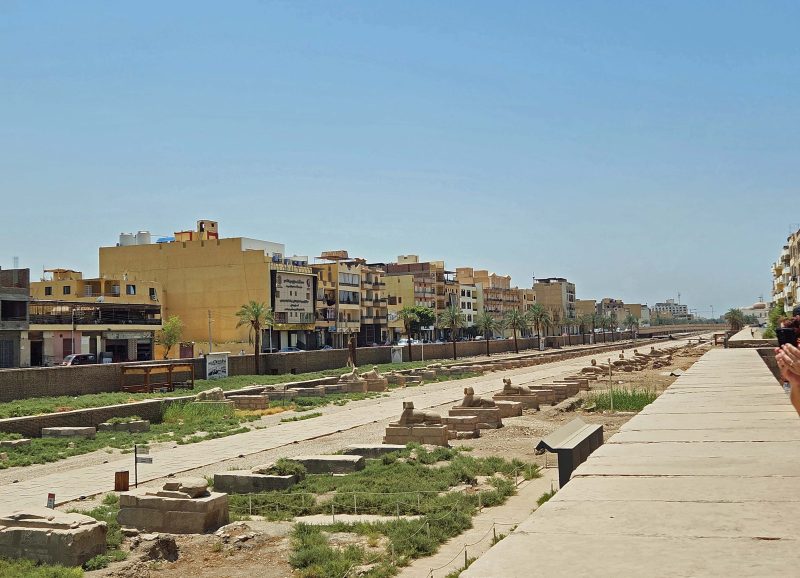
Luxor has been the spiritual capital of Egypt for 15 centuries. The visitor’s center outside the temple complex had a model of the Karnak Temple (photo below). This temple is the second-largest in the world (the largest is in Cambodia) and was embellished for 1,500 years by 30 pharaohs. The entire complex includes 26 temples and could fit the equivalent of ten cathedrals within its walls. It also had a huge sacred lake (the blue rectangle in the photo below). Most of its construction is not unique, but its size and the number of its features are vast.

The building in the photo below was near an entrance to the temple. The columns are described as “megaliths.” Well-named.
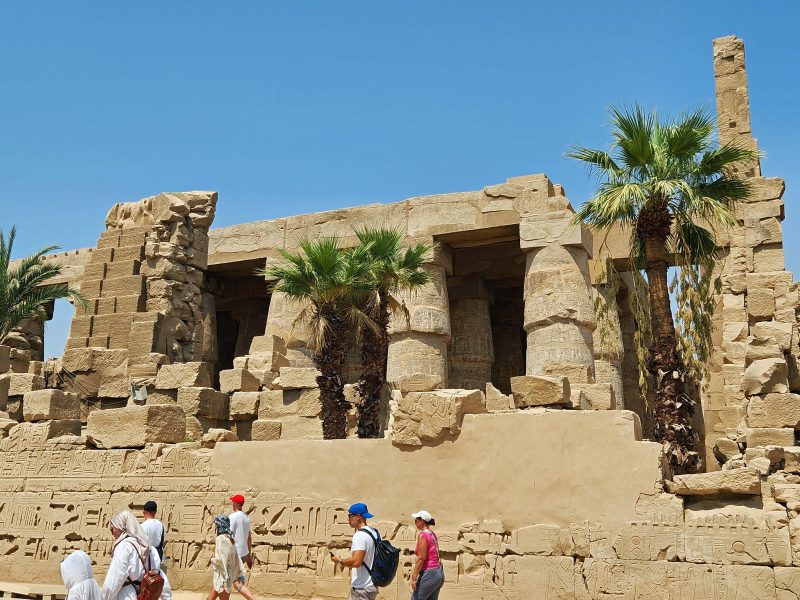
The part of the temple shown below is referred to as the ancient avenue. If you look at the photo of the model (above), this view looks through the left wing of the temple.
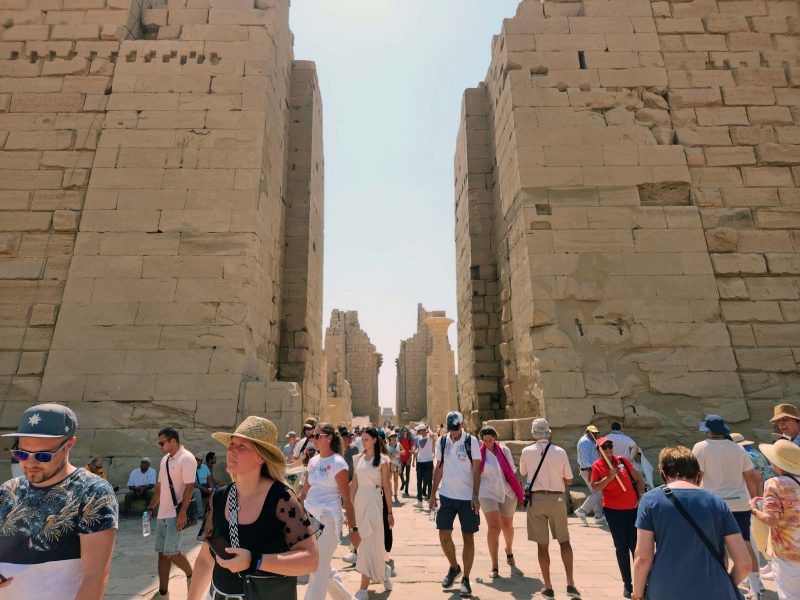
The obelisks shown below are called tekhenu and are usually placed at the entrance to a temple. The Karnak Temple originally had approximately 20 obelisks; these two are the largest to survive.
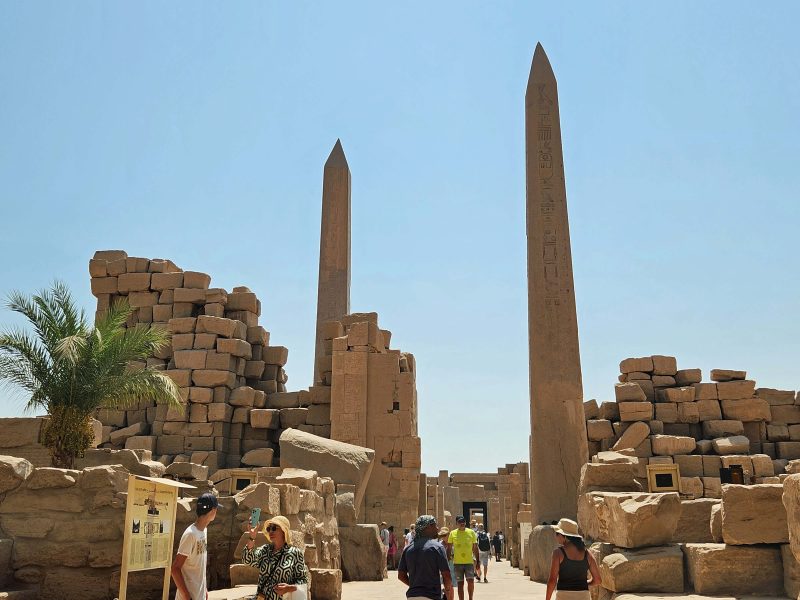
The columns in the photo below were in the Great Hypostyle Hall. They are decorated with religious scenes showing the pharaohs in the company of Egypt’s gods. There is a progression of scenes on every wall, column, and gateway in this hall. The hall has 134 massive columns arranged in 16 rows. Most of them are 33 feet high, but 12 of them are 69 feet high and 10 feet in diameter. They once supported a towering ceiling.
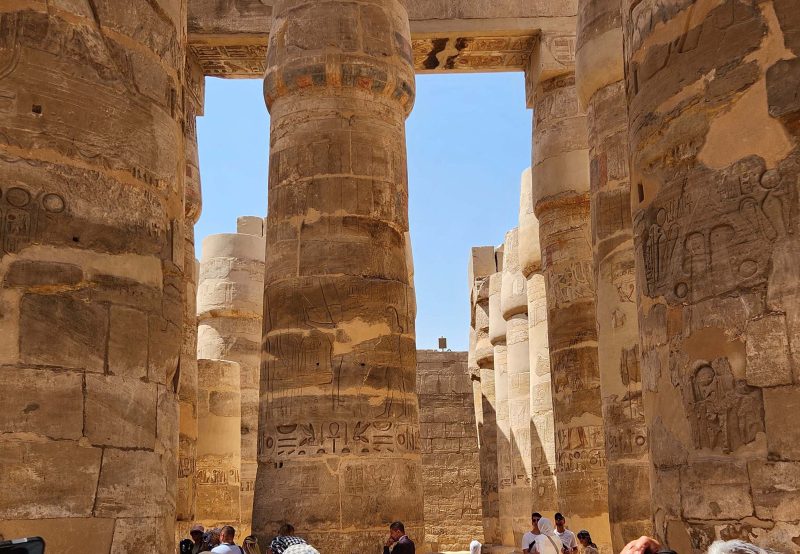
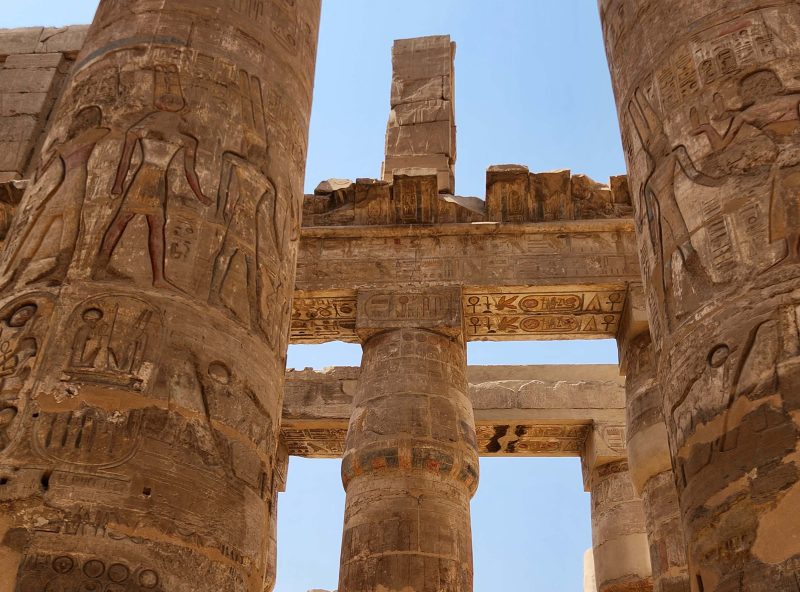
These criosphinxes (ram-headed) signify the god Amun, lord of Karnak.
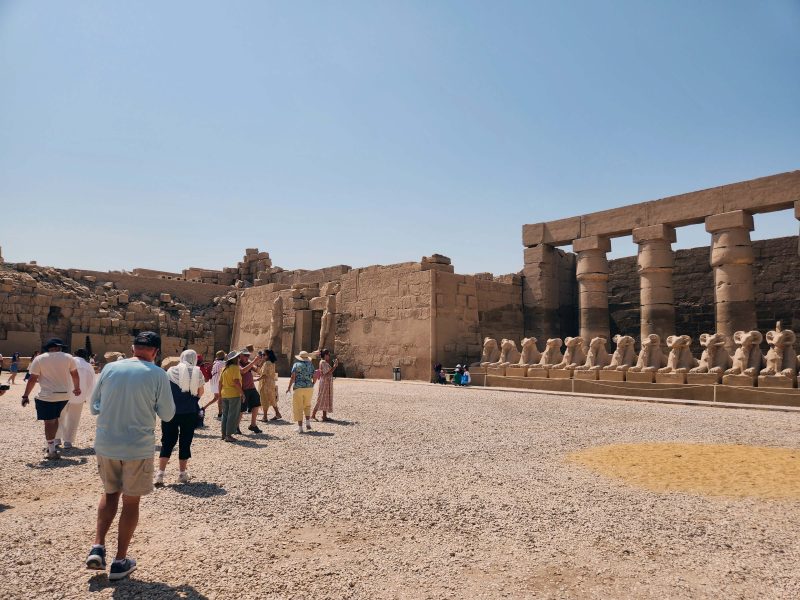
This small room was a place for high-ranking personnel (priests and pharaohs) to pray and/or to meditate. The shaft of light probably has some religious meaning. There is also a sun god’s shrine in the Karnak Temple complex. It was built to focus sunlight on the shrine at the winter solstice, but we were there in August, so we didn’t see that.
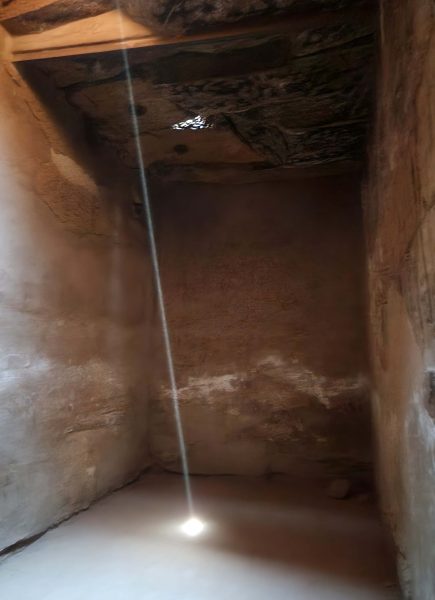
The statues in this hall are “Ramses II as Osiris.” Ramses II was one of the pharaohs who enlarged the Temple of Karnak. He commissioned this hall in which he is portrayed (repeatedly, in case the gods didn’t get the message) as Osiris’ mummy. Osiris, the god of the dead, was one of the most worshipped and respected gods in the Egyptian religion, and was the first mummy in history; therefore, every mummified body afterward followed in the steps of Osiris. One of the prevailing tenets of the Egyptian religion was the desire to enter the realm of Osiris after death, and these statues illustrate Ramses II’s desire to do that.
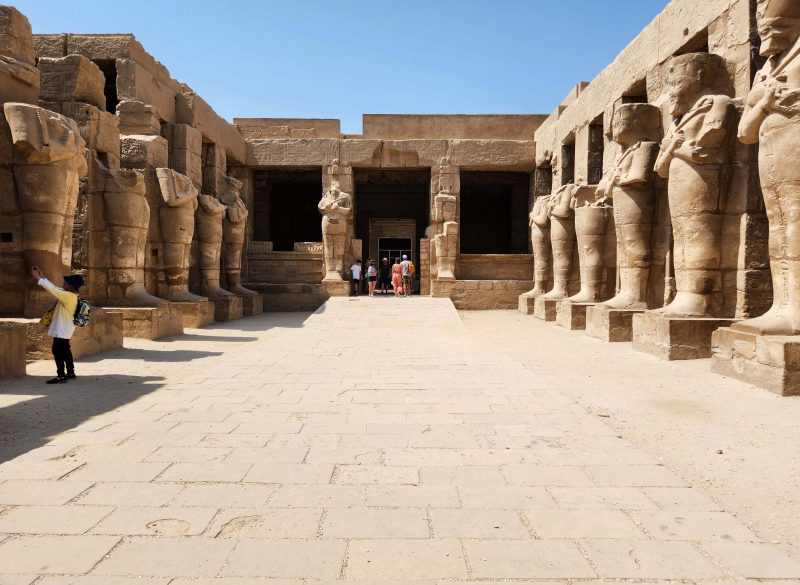
Ted and I quickly learned that, in the Sahara Desert, the sun has been warming the sand and rocks for millennia, and the sand and rocks have been efficiently storing that heat. In Egypt, while the sun beats down at 110 degrees, the heat also reflects upward. The natives we saw didn’t seem to be suffering (i.e., sweating or tiring) as much as we were, so acclimatization probably makes a big difference in tolerance for the heat.
Having been a member of the excavation team at the Karnak temple, Hanan is justifiably proud of what has been discovered at this site. After we’d walked around the temple for the scheduled four hours in the 108-degree afternoon heat, Hanan offered additional supplemental information to anyone who was interested and would like to follow her. She also suggested that some of us might prefer to wait on the bus. I hope her feelings weren’t hurt when all of us headed for the bus. In our defense, we’d all been up since 4:00 a.m. for our flight to Luxor. The bus took us to our air-conditioned river ship where we unpacked our things for our eight-day cruise, showered, and enjoyed a delicious onboard dinner with our friends.